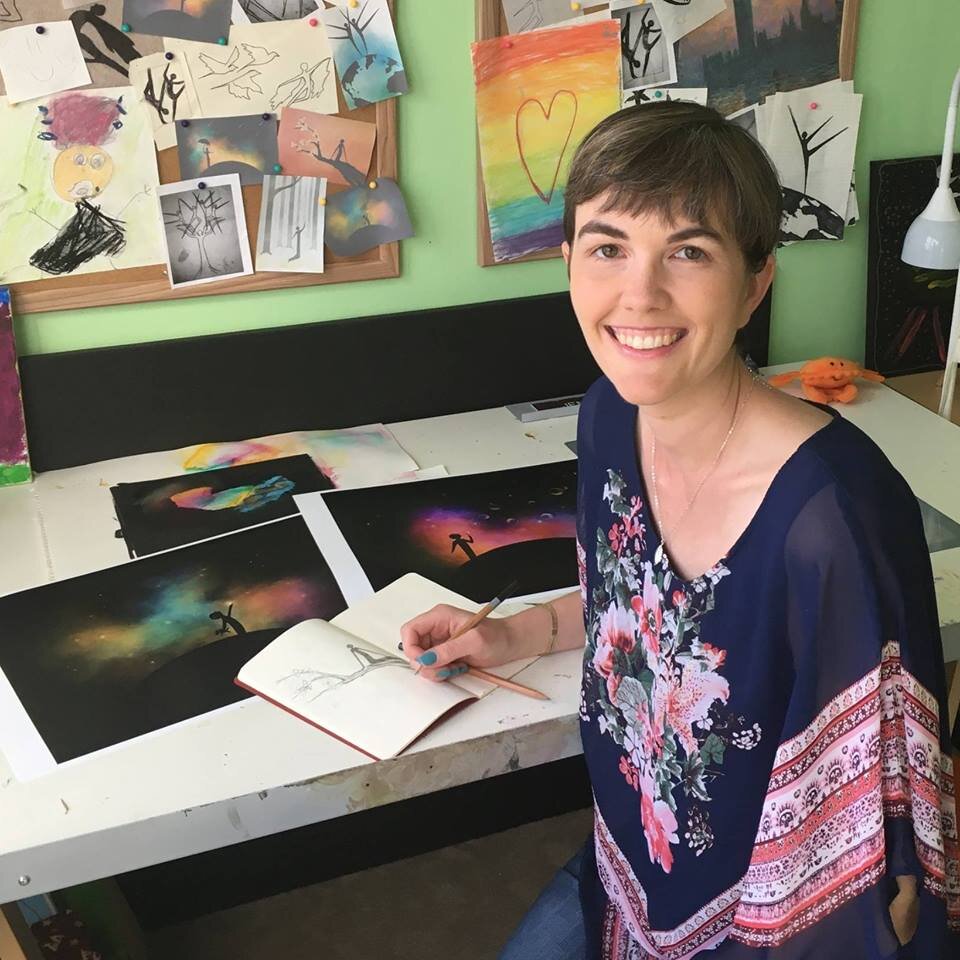Storytelling With Children: Lessons from the Pre-K Crowd
Last week, I had the joy of heading to a local preschool to share some of my creative lessons and energy (the same preschool my daughter attended five years ago, which is always super fun). I was invited to speak with a room full of eager five-year-olds on the topic of books and writing. While I may not be a published author, I have written and illustrated several books for my daughter, I love writing, and I’m certainly no stranger to the concepts of idea generation, creativity and encouragement.
I enjoyed talking with the kids about writing. I read one of my own books and showed them the process of illustration. They kept me on my toes with questions, both related and completely divergent from the topic-at-hand. The best part, though, always comes after the presentation. When I finish talking to everyone as a group, and giving them a general picture of storytelling, that’s when I work with the kids in a small group. That’s when I get to talk to them one-on-one. Together, we create characters and take them on a fantastic journey.
Creating a character or story out of thin air is a difficult task for most people, especially when there isn’t much time. I always try to get kids to create a character that is new, fresh from their imagination. Some children find this easy, immediately locking on to a character type, drawing it and giving it a name. Not used to storytelling, others rely on characters they have seen in stories before, generally from books or television.
So, what if a child just refuses to come up with an original character? Is all lost in the creative exercise? Nope. Creativity is never ‘all or nothing’. One little guy really wanted to use Spongebob as his character. Two others insisted on PJ Masks. The characters may not have been original, but our ensuing discussion certainly was. Together, we took those characters and imagined them outside of their normal environment. They flew spaceships, scaled mountains and faced an active volcano. By moving the characters around and changing their scene, we were able to talk about how these characters would act and react. The kids were able to use their imaginations, even though they started with an existing character. Creativity at work!
Most schools, even preschools, like to have written work. They like to have a worksheet, something they can use to document and point to, when asked what has been achieved. I understand that. It makes sense. I created a worksheet for the kids to write about and draw their characters. The important work, however, the stuff that really gets them thinking, is in the conversation. You can’t document it. You shouldn’t, not in its formative stages. It only gets in the way of drawing out that imagination.
The key here is not in writing. It’s not in the forming of letters. It’s not even in the drawing of the characters in bright and varied color (more on that in a minute). It’s the storytelling. It’s learning to use our minds to create. The words, the pictures, they come after our minds have been at work. The true key is conversation. It’s asking a child to think through an idea, form it, flesh it out. The secret is encouragement. Lots and lots of encouragement.
I love to have conversations with kids. I love to pull their ideas out of their heads when they are convinced they don’t have any. I love the look on their faces when they realize they’ve done it, when they see that they are capable.
If you have a hesitant storyteller at home, absolutely feel free to start off with a character that they already know and love. Ask them what that character would do in different or wild scenarios. Get them to think about how the setting might change the action. It isn’t necessary to write down every thought. Listen. Ask questions. Find out what comes next. Throw a monkey wrench into their story and see if they run with it, see where it takes them. Is everything going just a little too well for that dinosaur eating plants at its favorite tree? What happens if the dinosaur suddenly finds itself standing by a volcano? What happens if the dinosaur meets a dog? There are endless possibilities.
As part of the worksheet that I put together, each child was asked to draw their new character. Interestingly, though some of the children struggled with creating original characters and storytelling, every single one of them drew a picture without prompting, complaint or judgement. Not a single one looked at me with concern. No one said, “I can’t draw.”
Five must be a golden age. Children of that age have developed the motor skills to draw, are full of ideas that they aren’t yet comfortable expressing through the written word, and have not yet hit the self-consciousness of age. They are less likely to judge their drawings skills against their peers. They are simply expressing themselves. Before long, such confidence disappears. Let’s work to fight against that slide. Let’s work to lift them up, to grow that confidence. It doesn’t have to slip away.
Need help getting started? Head over to my first post on storytelling and check out the Gently Guided Activity.







